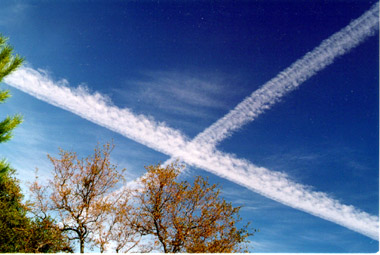

Let's explore some of the ramifications of the summer solstice.

|
While visiting my mental health specialist, Dr. Green, at his Bayou Golf Club office June 19, I found myself reflecting on the length of shadow cast by the sic-foot flag stick. Month by month it had been getting shorter. This day it was only 28 inches. I had been waiting six months for the shadow to reach its shortest length. Since the summer solstice had taken place at 7:03 A.M. Sunday, I knew it would start to lengthen at my next play. This gave me a bit of melancholy. Winter is on its way. Then I realized that summer was just beginning and that made me feel happier. Let's explore some of the ramifications of the summer solstice. The cause is that tilt of the earth's axis with respect to the plane of the earth's orbit around the sun. Summer happens when the title is toward the sun. winter happens when the tilt is away from the sun. The terms vernal and autumnal equinox apply to the times when the sun is positioned overhead at the equator, moving north and south, respectively. At the summer solstice, the sun is directly overhead at noon at 23 degrees 27 minutes north latitude. This marks the Tropic of Cancer, along which lie Calcutta, India; Havana, Cuba; Hong Kong; and Mazatlan, Mexico. Six months later, the sun is directly overhead at 23 degrees 27 minutes south along the Tropic of Capricorn. Rio De Janeiro, Brazil, is one of the cities lying along this tropic. Here's an instructive exercise: draw a circle with a 3-inch radius to represent the Earth and another circle with a 4-inch radius to represent the Earth's atmosphere. Draw an extended radius at 45 degrees north latitude, which on Earth runs just north of Salem (Oregon). Draw extended radii at 23 degrees 27 minutes north and south. For references, label the three lines A, B and C. Draw a sun symbol at the end of the extended radii B and C. think of these radii as the north and south seasonal march of the sun. Draw a line tangent to A at the surface of the Earth. This is the plane of the horizon. Draw a line parallel to B intersecting A at the point where it leaves the Earth's surface. Twenty-one degrees, 30 minutes is the angle of the sun south of the zenith at noon. chick it out. Now for a bit of trigonometry. The length of the shadow (L) cast by a pole of a certain height (H) is equal to tan (21 degrees) x H. On Dec. 21, the length will increase to tan (21 + 47 degrees) x H. Answers: 2 degrees, 4 minutes; 7 degrees, 2 minutes. Draw lines parallel to B intersecting the outer circumference. This shows the Arctic Circle, above which there is 24 hours of sunshine. Two calories per square centimeter per minute of solar energy comes to the upper atmosphere. This is called the solar constant. At the summer solstice, about 1,000 calories per square centimeter per day come to the top of the atmosphere from about 30 degrees to 90 degrees. About half of that value is absorbed by the surface at 30 degrees and only a third at 90 degrees. This results from a greater reflectivity and the energy being spread over a larger area due to the oblique path. Consequently, even though the sun shines 24 hours a day at Point Barrow, Alaska, its temperature is lower than that of Seattle. It is instructive to consider the length of time from sunrise to sunset on June 21 at different latitudes: 0 degrees, 12 hours; 30 degrees, 13.9 hours; 45 degrees, 15.2 hours; 70 degrees, 2 months; 90 degrees, 6 months. One last question: Why is June 21 the beginning of summer? This question has a complex answer. A simplistic reply is that the Earth-ocean-atmosphere system has an inertial lag effect. That is, results take place long after the cause. The cause is the receiving of energy from the sun maximizing in the norther hemisphere on June 21. The effect is high temperatures maximizing in the following two to three months as the energy received by the ocean is slowly released to the atmosphere. One parting shot to those readers who have stayed with me to the end: La Niña is here. Now is the time to start preparing for a wet, cold winter. |

![]() Words on the Weather Articles:
Words on the Weather Articles:
London Fog | Weather's Ups and Downs | Yin/Yang of Weather | Clouds from Prison
Under-the-Weather Man | Weather and Literature | For Spacious Skies | El Niño | Summer Solstice
![]()
![]()
All Rights © Copyright John A. Day, 1998 - 2007
Site Design by DoubleRich Design
Last updated on: